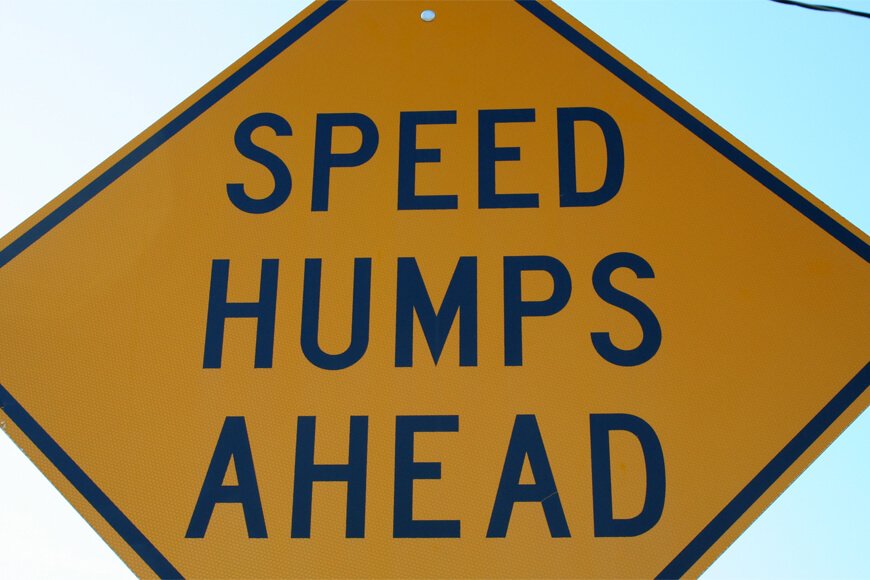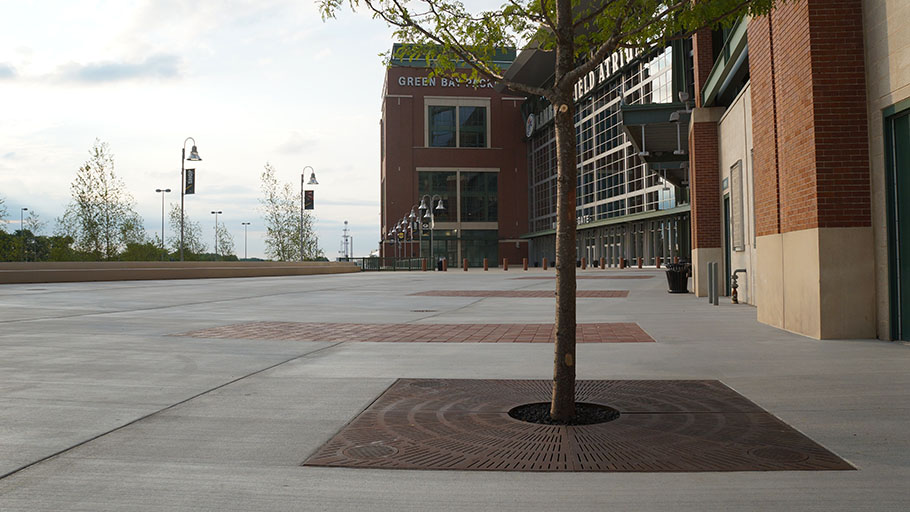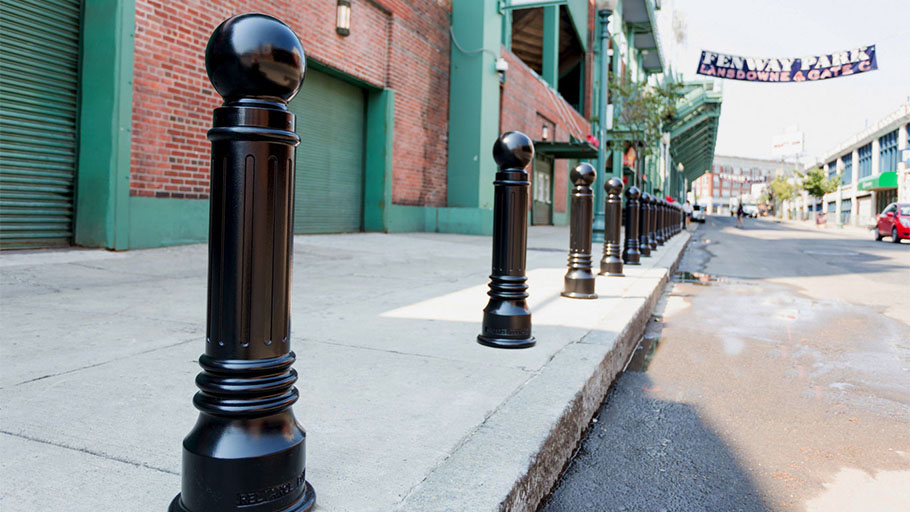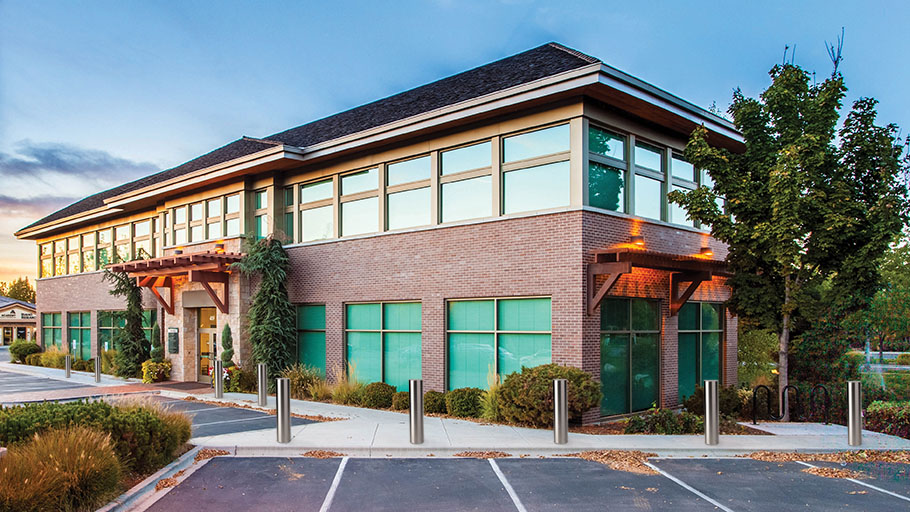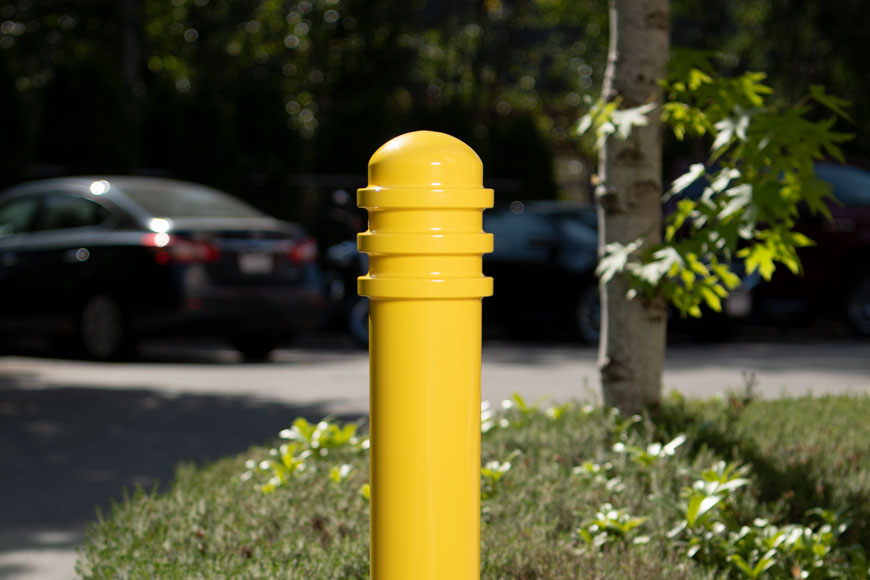Understand how configuration and installation affect performance
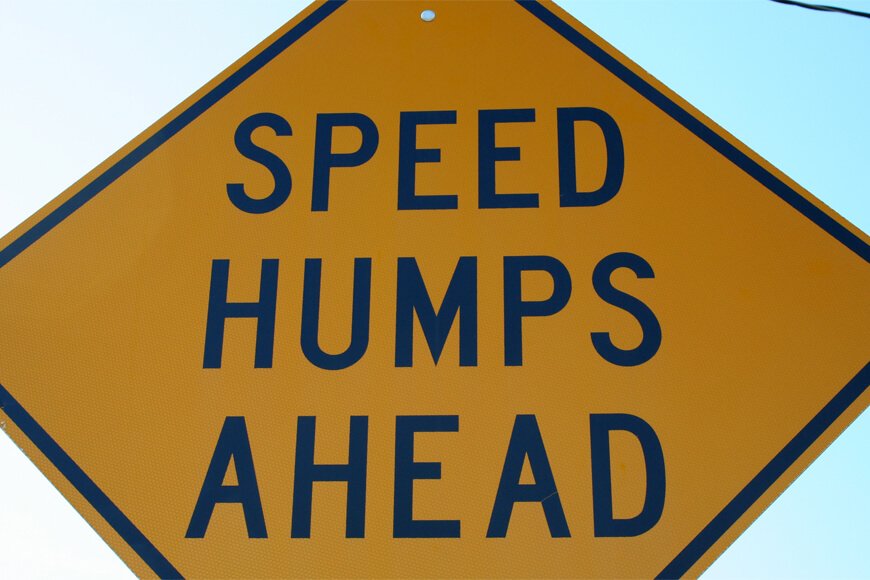
Speed is the primary factor in most vehicle accidents—increasing both risk and severity. As drivers move faster, they have less time to respond to road conditions and any resulting collision causes more damage.
To counter the problem of speeding, municipalities can choose from a number of traffic calming tools to encourage safe driving. Speed limits, speed bumps, speed humps, roundabouts, and signs are among the strategies used to slow drivers down and increase driver awareness. Although speed zones also encourage safe driving, they can be difficult and expensive to enforce on a larger scale. In areas where speeding carries heightened risk, vertical deflections will impose speed reduction. Speed humps and speed bumps are examples of these vertical deflections, and are widely used because of their ease of installation and low cost.
Speed humps or speed bumps
Despite the similar names, speed humps and speed bumps are not interchangeable—they are distinct in their performance. Both use a 2–4 inch rise to force drivers to reduce their speed. Speed bumps have a much shorter travel distance than speed humps and create a more aggressive jolt for the driver. Speed bumps measure up to 6 feet long, forcing serious speed reduction. Vehicles’ front wheels pass over the bump entirely before the rear wheels pass over—causing the driver to effectively experience two bumps. This requires drivers to slow to a near-stop to pass over them safely and comfortably.
Speed humps are modular and span 12–14 feet wide, or the entire width of a road if desired. Vehicles can pass over them with less of a jolt, and can safely maintain speeds of 15–20 miles per hour. They are better suited for local roads and lanes where low speeds are preferred but full stops are not necessary or convenient.
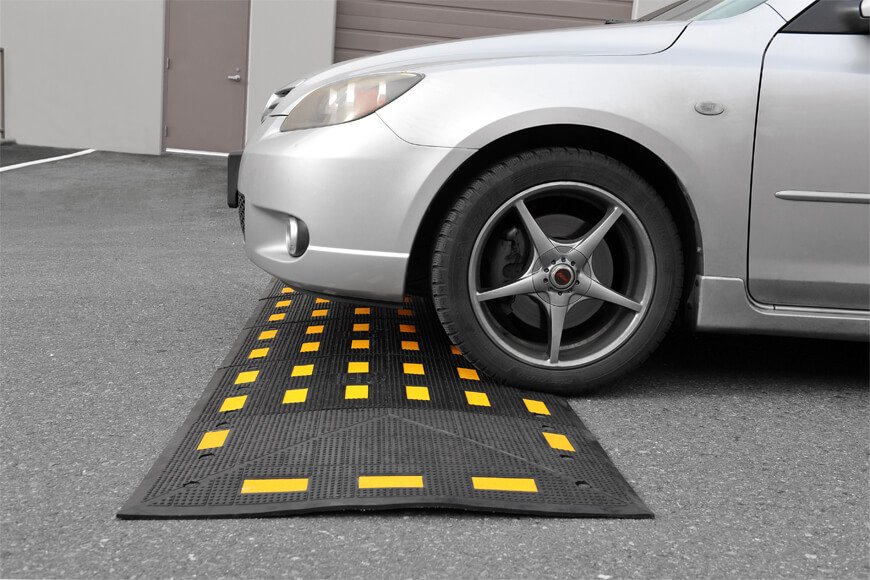
Speed hump benefits
Speed humps are intended to reduce driver speeds down to 10–15 miles per hour over the hump, and 25–30 miles per hour between humps in a series. They should be arranged to avoid disruption of cycling lanes and on-street parking.
Several studies from the Iowa Department of Transportation have shown a 40 percent speed reduction for most vehicles. Excessive speeders are also deterred. These effects translate to fewer accidents—children are much less likely to be struck by cars in neighborhoods where speed humps are installed.
Most importantly, the results don’t revert over time. Other traffic calming measures such as “slow” signs lose efficacy with age. The reduction in speed and traffic volume from speed humps can remain long after local drivers become accustomed to their presence.
Speed hump precautions
Although speed humps have been proven to reduce speed and make neighborhoods safer, some critics claim that they can cause damage to vehicles, increase emergency response time, and increase traffic noise. Fortunately, many of these issues can be mitigated through proper speed cushion planning.
Vehicle damage
There is potential for speed humps to damage the undercarriage of vehicles, particularly if the vehicles are lowered. There are several methods that urban planners can use to mitigate any potential damage:
- Placement: Speed humps should be placed on level roads as a change in incline can make the hump functionally higher. Other considerations should include placement relative to intersections, driveways, manholes, streetlights, and curbs.
- Material: Plastic and rubber speed humps cause less damage to vehicles. Rubber will compress under impact, and plastic will sustain damage before there is any damage to the car. Concrete and metal speed humps are more likely to cause damage because of their lack of flexibility.
- Visibility: Drivers who are unable to see or anticipate speed humps can be at risk if they speed over the humps. Signage, paint, and reflective strips can all be used to increase speed hump visibility.
- Weather: Speed humps can be hidden under snow, surprising drivers and interrupting snow removal operations. Signage at the roadside of speed humps help decrease the inconveniences caused by snowy weather conditions.
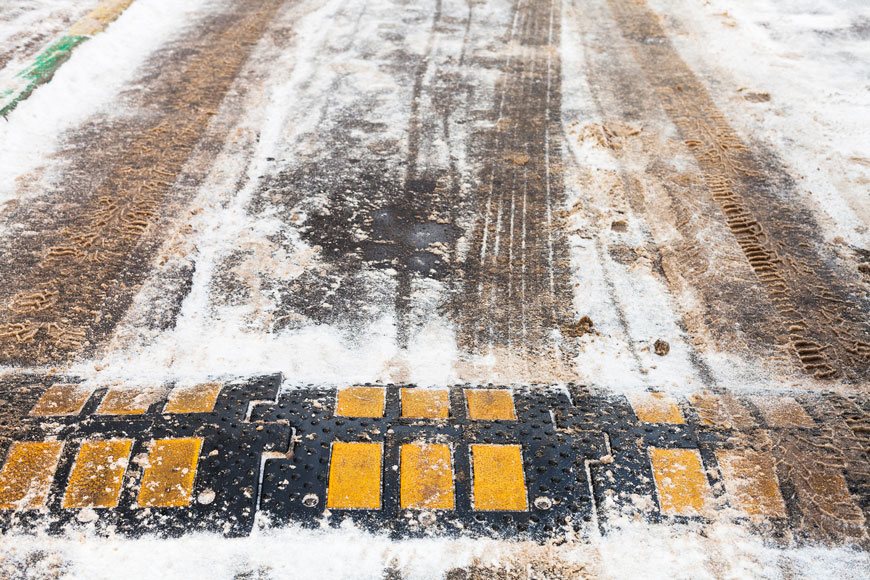
Delayed emergency response
In most cases, decreasing speed increases safety—but what about emergency vehicles? Speed is pivotal for ambulances, fire trucks, and police vehicles. In emergencies, poorly placed speed humps can be a hazard. There are a few simple ways for speed humps to accommodate emergency vehicles:
- Offset installation Speed humps can be installed in a staggered formation between opposing lanes. During an emergency, response vehicles can maintain higher speeds by swerving into oncoming lanes to effectively slalom around each hump.
- Speed cushion configuration Ambulances and fire trucks have wider axles than passenger vehicles. Speed humps can be installed in speed cushion configuration—with cut-outs at designated widths to let emergency vehicles pass through unimpeded.
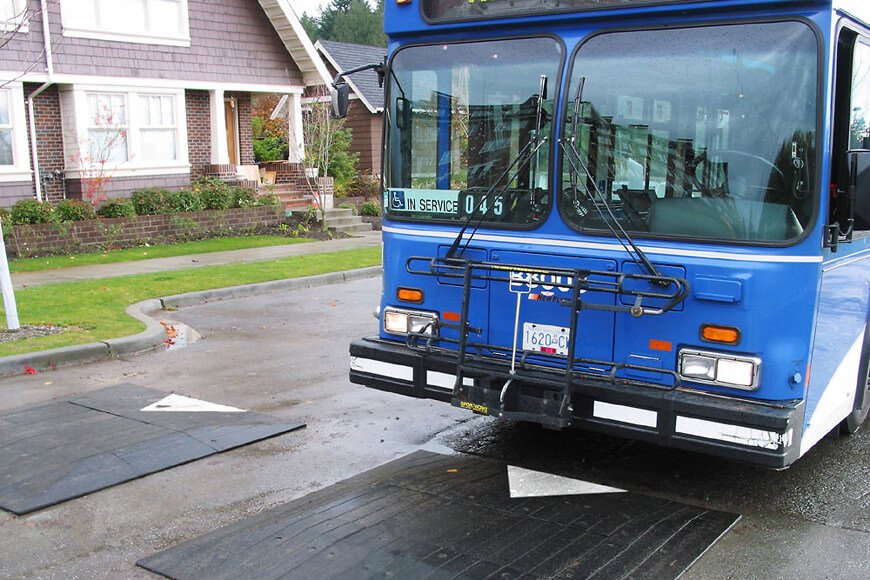
Speed hump planning
To further decrease impediments to emergency vehicles and general traffic mobility, speed humps should only be placed on local roads and lanes. They should avoid collector and arterial roads—especially transit, truck, and major emergency response routes. Cul-de-sacs, and steep or sharply curved roads, should also be avoided.
Speed hump spacing
Speed humps should be installed in succession to be most effective. For local roads, speed humps are usually installed 150–250 yards apart, or 65–100 yards apart in lanes. Different municipalities may have different guidelines for installation.
The California Subcommittee of the California Traffic Control Devices Committee developed the following equation to determine optimal spacing between speed humps:
Hs = 0.5[2(V85)(V85)-700]
Hs = optimal spacing between 3-inch high speed humps (in feet)
V85 = desired 85th percentile speed (in miles per hour) between speed humps
For example, in order to reduce interim speed to 25 miles per hour, the speed humps would need to be placed 275 feet (about 90 yards) apart.
Speed hump configuration
Speed humps can extend from curb to curb, or be staggered along different sides of the road. They should not be placed too close to an intersection, drainage, driveways, or in curves. Speed humps can be installed beneath street lighting for increased visibility.
Speed hump materials
Concrete, asphalt, and metal are the most rigid of the material options and are the most efficient at slowing traffic. However, concrete and asphalt can be difficult to form into precise shapes and require supervision while drying to prevent graffiti. They can also cause damage to vehicles if not installed properly and in appropriate configurations. Weather conditions, frequent use, and age can also cause concrete and asphalt to crack or chip over time.
Rubber and plastic are much lighter than concrete, asphalt, or metal, and cheaper to transport. Both are resistant to sun, moisture, and oil damage. They can be easily removed and reinstalled as needed. Rubber is also more flexible, presenting less damage to vehicles. Its flexibility means it can conform to natural surface contours of the road, and won’t warp, crack, or chip over time. The increased density means it will be long-lasting and low maintenance.
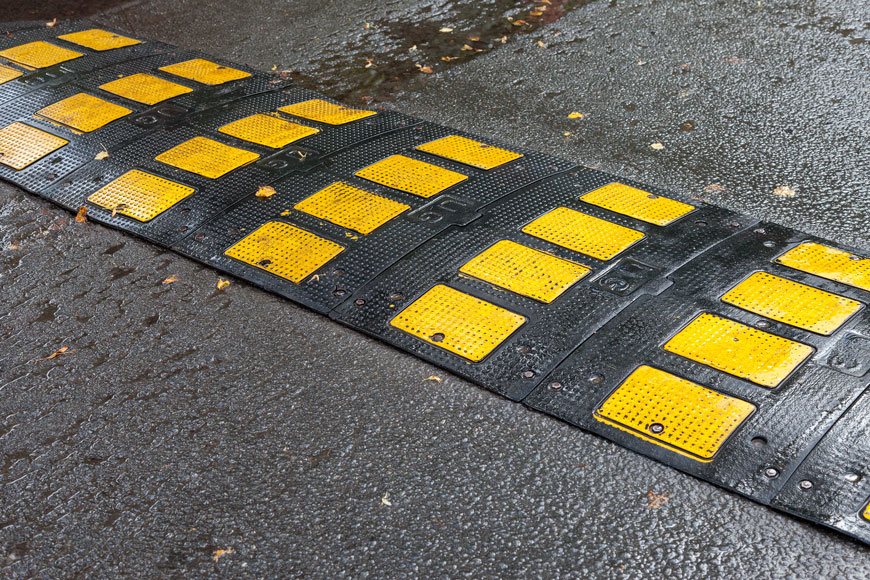
Information provided is for informational purposes only. If planning a traffic management installation, consult a certified engineer and/or relevant local authorities for details and information specific to any intended installation location.
Sources
- Tester, June; Rutherford, George; Wald, Zachary; and Rutherford, Mary. “A Matched Case-Control Study Evaluating the Effectiveness of Speed Humps in Reducing Child Pedestrian Injuries.” Am J Public Health.
- City of Lakewood, Colorado. “Pros and Cons of Speed Bumps.”

